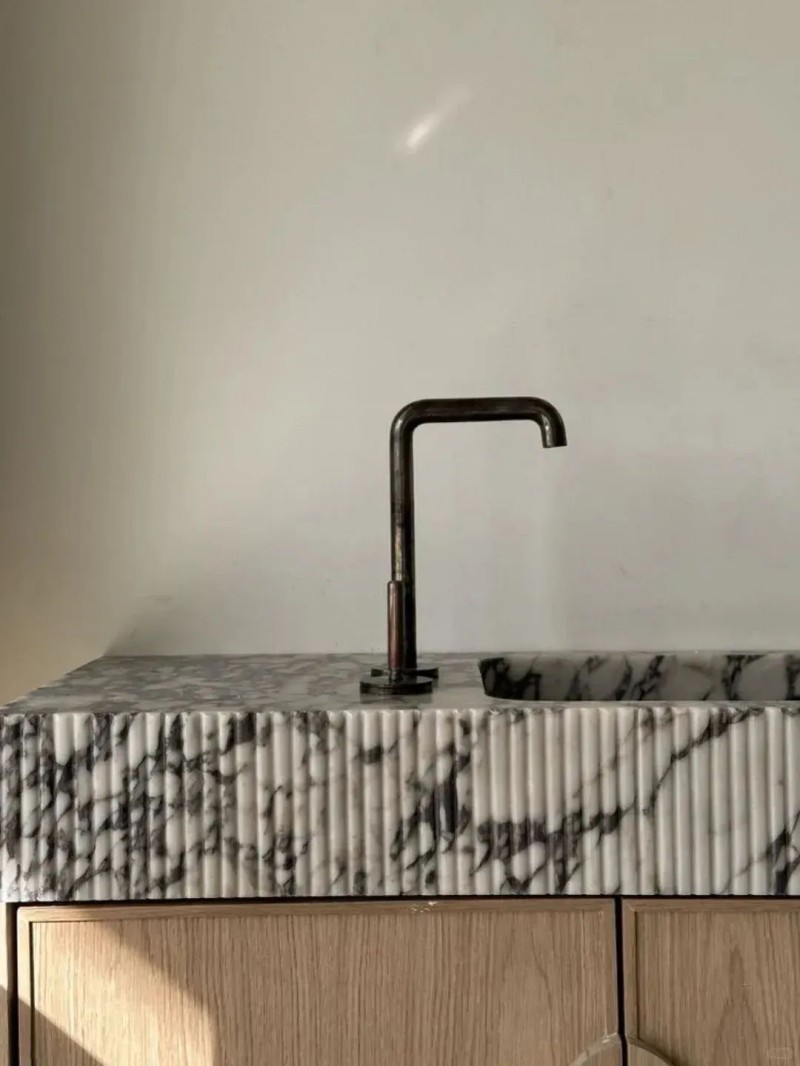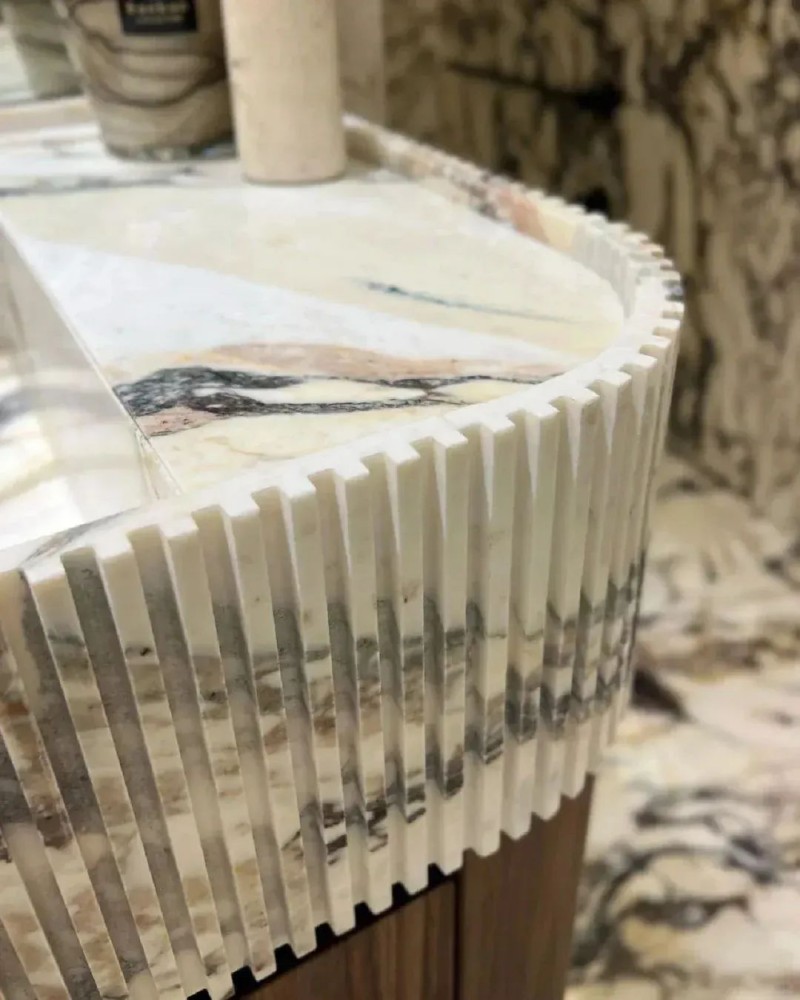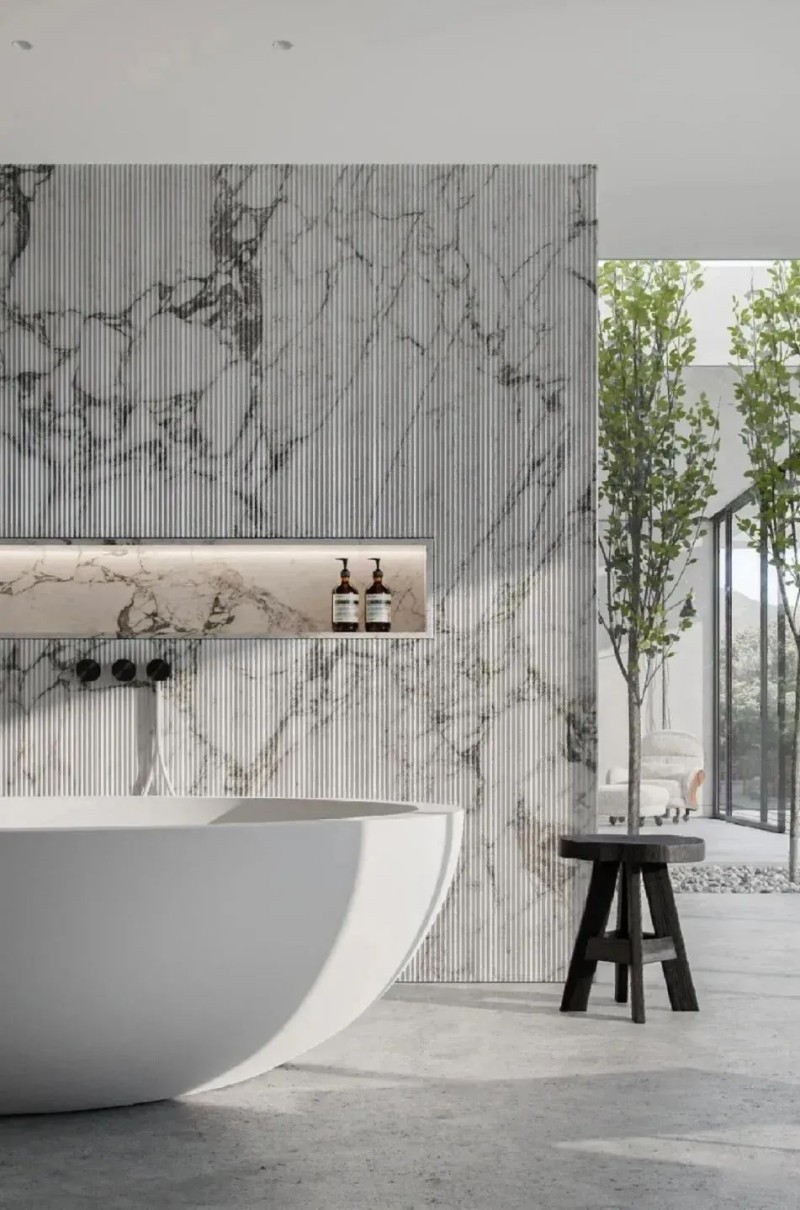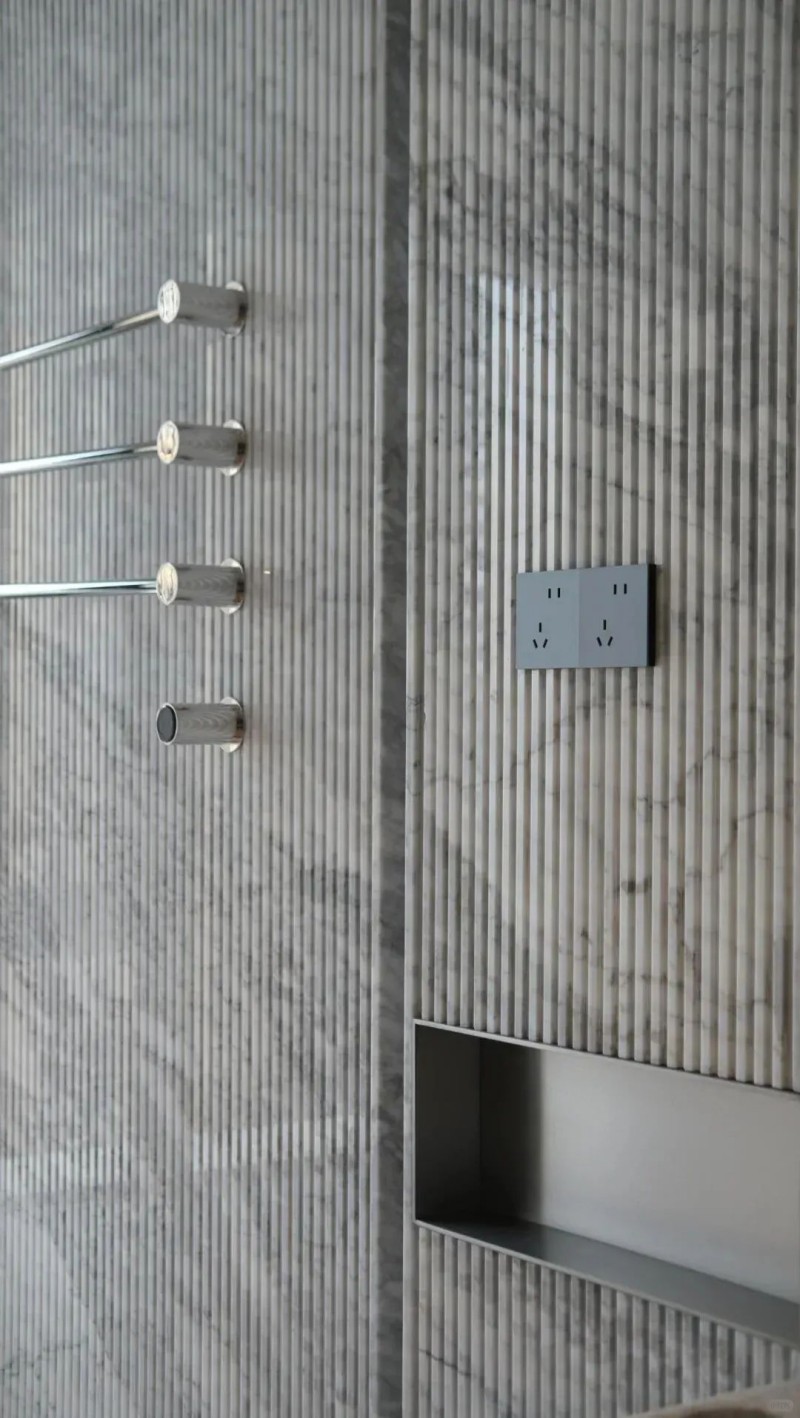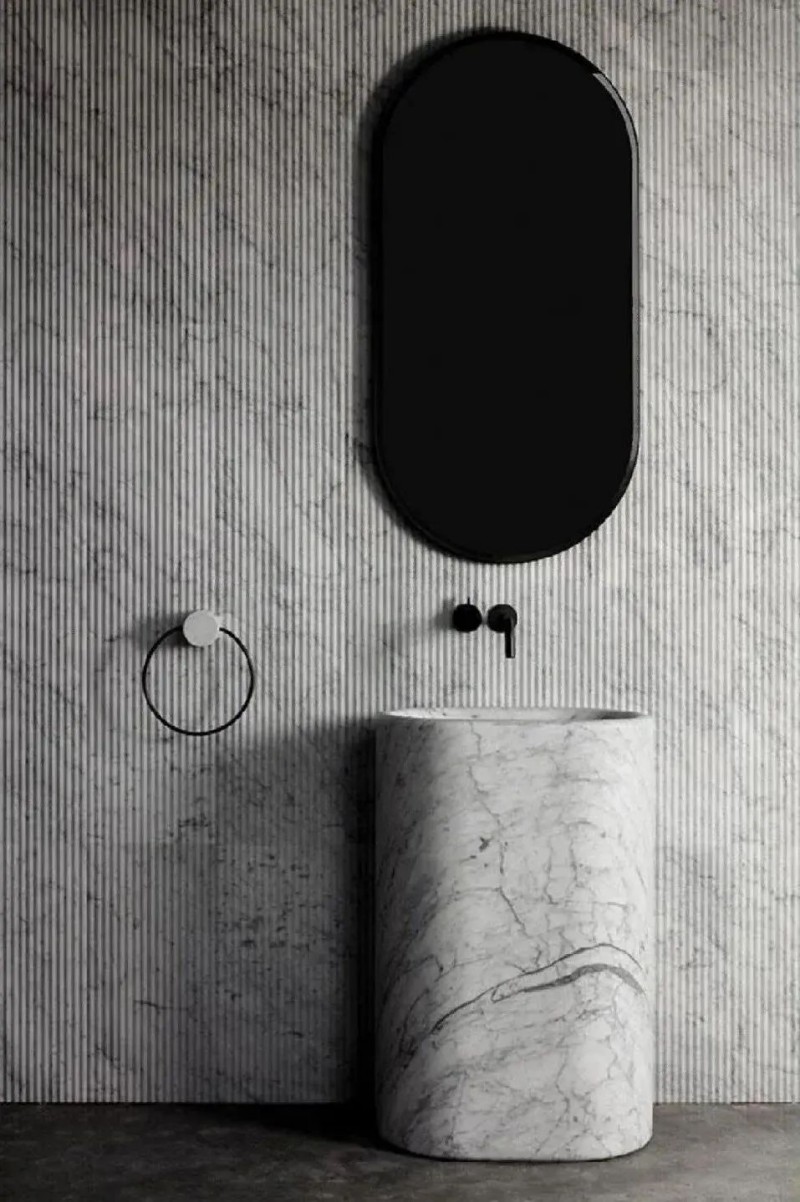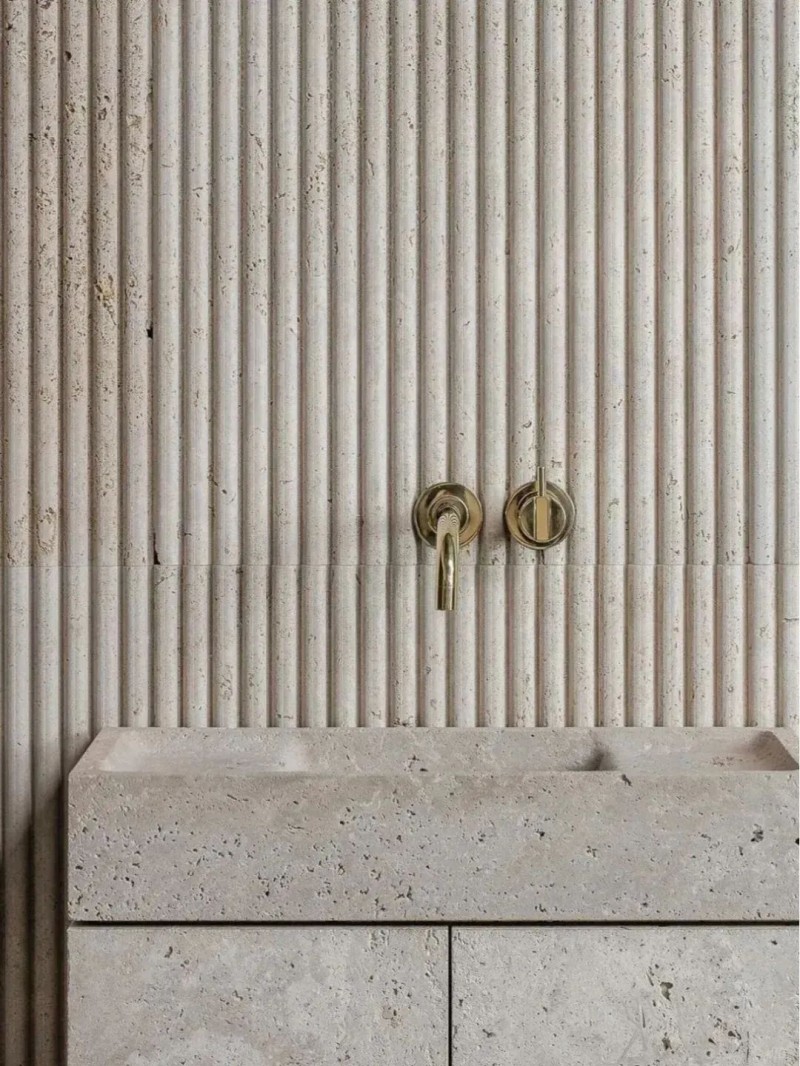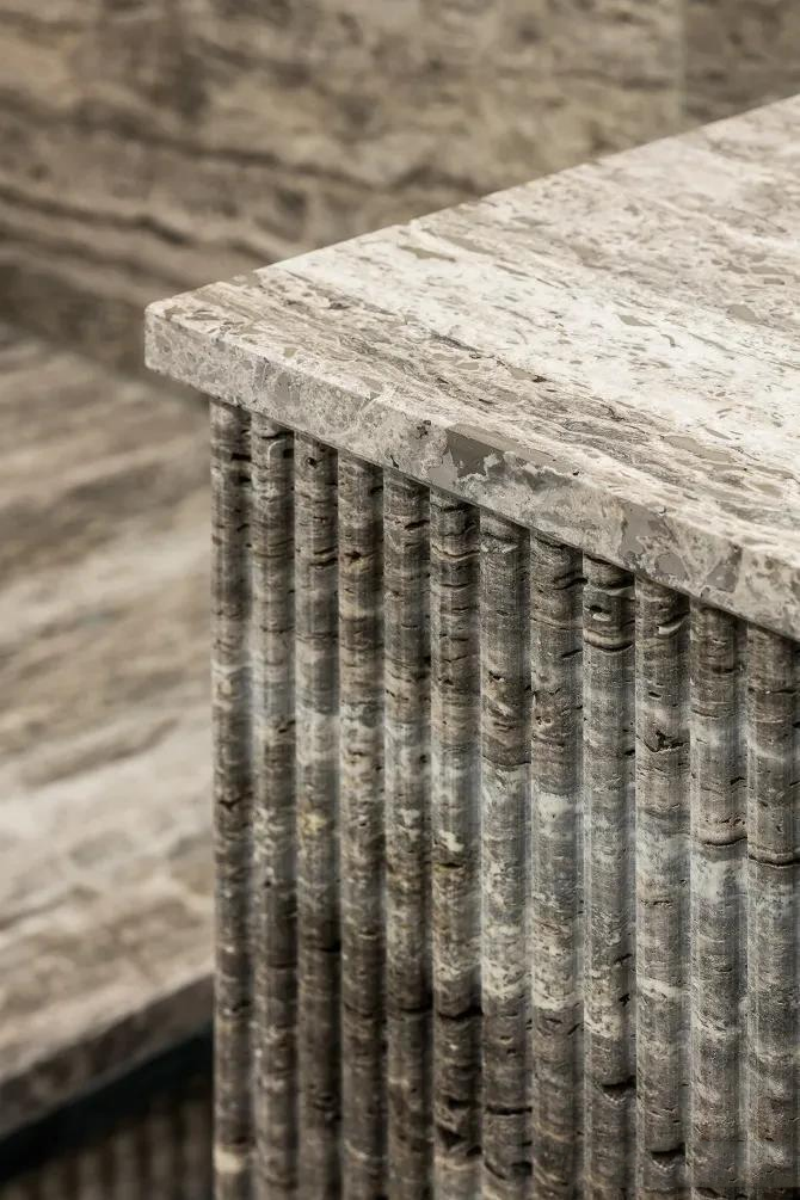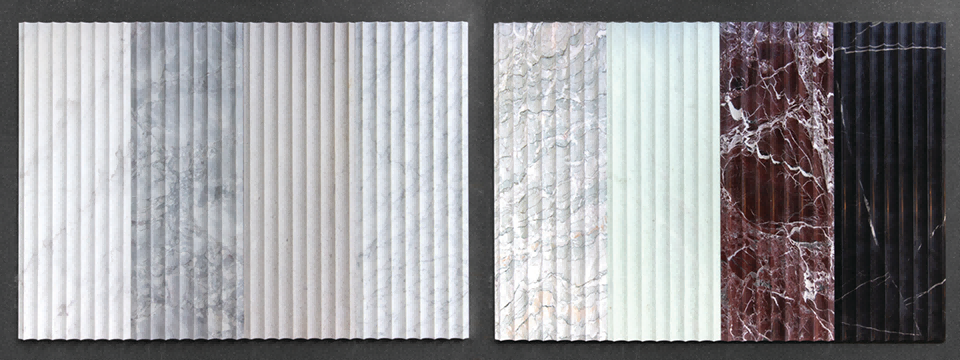Stone grooving is the process of cutting grooves on the surface of stone using specific tools. These grooves can be straight lines, curves, or geometric patterns. Their purpose is to increase the decorativeness and anti-slip properties of the stone. The depth and width of the grooves can be adjusted according to design requirements to create different visual effects.
Advantages of stone grooving design
Strong decorativeness: Stone grooving can add texture and layering to the monotonous stone surface. Whether it is a simple modern style or a classical European style, you can find a matching grooving design. For example, in a modern style space, straight grooving can create a simple and atmospheric atmosphere; while in a European style, curved grooving can show an elegant and romantic temperament.
Anti-slip safety: Especially in humid environments, such as bathrooms and kitchens, stone grooving can effectively increase the friction of the ground and prevent slipping accidents. This is essential for family safety.
Easy to clean: The grooving design makes it difficult for water to accumulate on the stone surface, and dirt is easier to clean. Just wipe with a damp cloth to keep the stone clean and tidy.
Application scenarios of stone groove design
Floor decoration: Stone groove floor is widely used in hotel lobbies, shopping malls, villas and other places. It is not only beautiful and generous, but also can withstand high-intensity traffic pressure.
Wall decoration: Stone groove wall can add three-dimensional and artistic sense to the space. In areas such as living rooms and bedrooms, grooved walls can become a unique landscape.
Stair treads: Stone grooved stair treads are both beautiful and safe, and are the first choice for many high-end residential and commercial buildings.
How to choose stone groove design?
Consider the style of the space: Choose the appropriate groove design according to different space styles. If it is a modern style, you can choose a simple straight groove; if it is a traditional style, you can choose a complex curved groove or carved groove.
Pay attention to the stone material: Different stone materials are suitable for different groove processes. For example, marble is soft and suitable for shallow grooves; granite is hard and suitable for deep grooves.
